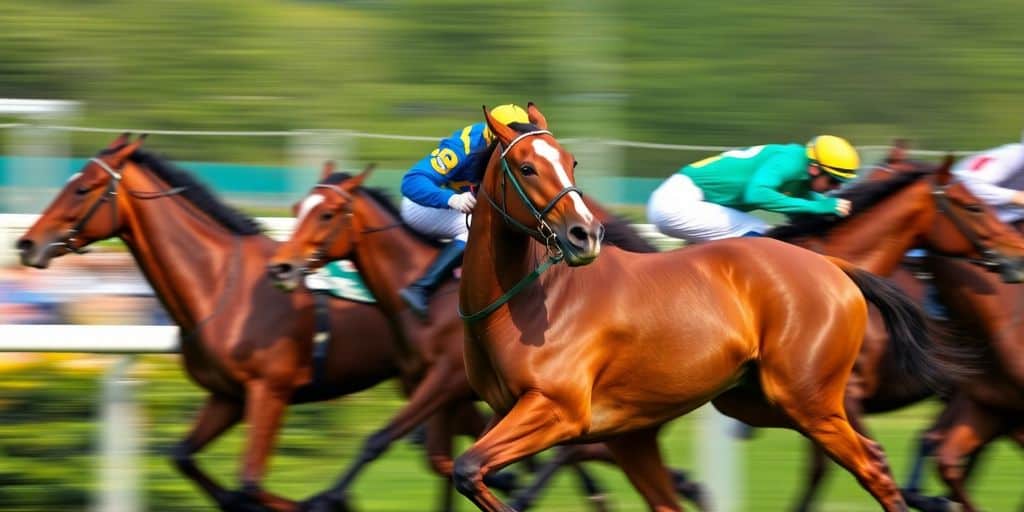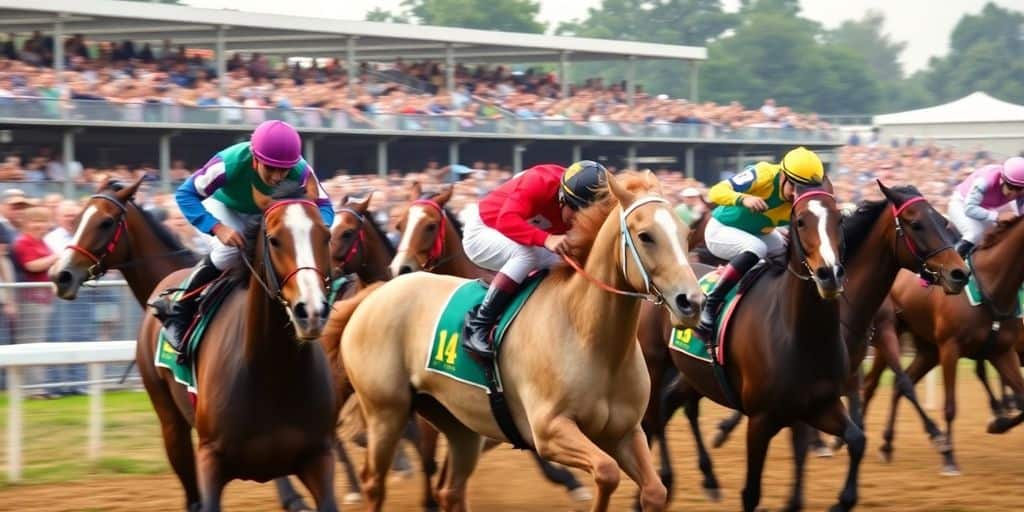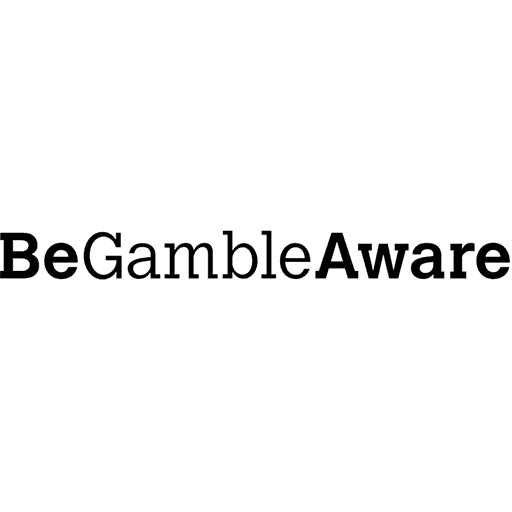Betting on horse races can feel overwhelming at first, especially if you’re new to it. With so much information out there, it’s easy to get lost in the jargon and various betting types. But don’t worry! This guide is here to break things down for you. We’ll cover the essentials of how to bet on a horse race, from understanding the basics to developing a solid strategy. Whether you’re a beginner or looking to sharpen your skills, you’ll find useful tips and insights to help you navigate the racetrack with confidence.
Key Takeaways
- Learn the key terms like odds and stake to enhance your betting skills.
- Evaluate horses and jockeys to make informed bets.
- Establish a budget and stick to it for responsible betting.
- Research race conditions and trends for better predictions.
- Seek expert tips but rely on data-driven strategies for success.
Understanding Horse Racing Betting Basics
So, you want to get into horse racing betting? It can seem a little intimidating at first, but once you grasp the basics, it’s actually pretty straightforward. Let’s break down some key things you need to know before placing your first bet. It’s not just about picking a name you like; there’s a bit more to it than that!
Key Terminology for Bettors
Okay, first things first: you gotta speak the language. There’s a whole bunch of jargon thrown around at the track, so let’s cover some of the most common terms. Knowing these will help you understand what people are talking about and, more importantly, what you’re betting on.
- Odds: This shows how likely a horse is to win, and how much you’ll get paid if you win. It’s usually shown as fractions (like 5/1) or decimals.
- Stake: This is the amount of money you’re betting. Don’t bet more than you can afford to lose!
- Form: This refers to a horse’s past performance. It’s like their resume, showing how they’ve done in previous races.
- Going: This describes the track conditions (e.g., firm, soft, heavy). It can affect how well certain horses perform.
It’s easy to get overwhelmed by all the terms, but don’t worry, you’ll pick them up as you go. The important thing is to start with a basic understanding and build from there. Don’t be afraid to ask questions, either! Most people at the track are happy to help a newbie out.
Types of Horse Racing Bets
Now, let’s talk about the different ways you can bet. There are a bunch of options, but here are some of the most common:
- Win: This is the simplest bet. You’re betting on a horse to finish first.
- Place: You’re betting on a horse to finish either first or second. The payout is usually lower than a win bet.
- Show: You’re betting on a horse to finish first, second, or third. Even lower payout, but a higher chance of winning.
- Each-Way: This is two bets in one: a win bet and a place bet. So, if your horse wins, you collect on both bets. If it places, you only collect on the place bet.
Here’s a quick table to illustrate the Win-Place-Show payouts:
| Bet Type | What You Need to Win | Payout |
|---|---|---|
| Win | Horse finishes 1st | Highest |
| Place | Horse finishes 1st or 2nd | Medium |
| Show | Horse finishes 1st, 2nd, or 3rd | Lowest |
How Odds Are Calculated
Understanding how odds are calculated is key to making informed betting decisions. Odds reflect the probability of a horse winning, according to the betting public. They’re not just pulled out of thin air. Bookmakers set initial odds based on their assessment of each horse’s chances, but these odds can change as people place bets. If a lot of people bet on one horse, its odds will shorten (meaning the payout will be lower), and the odds of other horses will lengthen.
Here’s a simple example:
Let’s say a horse has odds of 4/1. This means that for every $1 you bet, you’ll win $4 (plus your original $1 back) if the horse wins. So, a $10 bet would return $50. It’s important to remember that odds are just an indication of probability, not a guarantee of winning. You can find single bets at most race tracks.
- Fractional Odds: Expressed as fractions (e.g., 5/2). Multiply your stake by the numerator, then add your stake back in.
- Decimal Odds: Expressed as decimals (e.g., 3.50). Multiply your stake by the decimal to find your total return.
- Implied Probability: You can convert odds into a percentage to see the implied probability of a horse winning. For example, odds of 4/1 imply a 20% chance of winning. It’s good to know the types of horse racing bets before you start.
Evaluating Horses and Jockeys

Importance of Jockey Experience
Okay, so you’re looking at a race, and you’ve got all these horses lined up. But don’t forget about the jockeys! They’re a big deal. A good jockey can seriously improve a horse’s chances, even if the horse isn’t the fastest on paper. Think of it like this: a skilled driver can make a regular car perform like a race car, right? It’s the same idea.
- Check the jockey’s win rate. Are they consistently placing?
- Look at their recent performance. Have they been on a hot streak lately?
- Consider their experience with that specific horse. It takes time to build a connection.
It’s not just about raw talent. A jockey’s familiarity with the track matters too. They’ll know the best spots to make a move and where to avoid trouble. It’s like knowing all the shortcuts in a video game – it gives them an edge.
Analyzing Horse Performance
Alright, let’s talk about the horses themselves. You can’t just pick a horse because you like its name (though, I admit, I’ve done that before!). You need to dig into their past performance. Has the horse raced on this particular track before? Did they win? How did they do in their last few races?
Here’s a quick table to give you an idea of what to look for:
| Metric | Description
- Has the horse been injured recently? This can seriously affect their performance.
- What’s their preferred distance? A horse that excels at shorter races might not do well in a longer one.
Factors Influencing Race Outcomes
Okay, so you’ve looked at the horses and the jockeys. But there’s more to it than that! Lots of things can affect how a race turns out. Weather, for example. A muddy track can really slow some horses down, while others seem to love it. It’s all about knowing the conditions and how they impact each horse.
- Track conditions: Is it muddy, fast, firm? This is huge.
- Post position: Starting on the inside can be an advantage, but not always.
- The pace of the race: A fast early pace can tire out some horses, setting them up for a closer to win.
Don’t forget to consider things like the horse’s breeding and any equipment changes (like blinkers). It’s a lot to take in, but the more you know, the better your chances of making a smart bet.
Developing a Betting Strategy

Setting a Budget for Betting
Okay, so you’re thinking about getting into horse race betting? Great! First things first, you absolutely need to set a budget. I can’t stress this enough. Decide how much you’re willing to lose before you even look at a racecard. Seriously. Treat it like entertainment money, because that’s what it is. Once it’s gone, it’s gone. Don’t chase losses, don’t dip into your rent money, just… don’t. It’s easy to get carried away, especially when you think you’re on a hot streak, but trust me, discipline is key.
Choosing the Right Betting Type
There are so many different ways to bet on a horse race, it can be overwhelming. Win, place, show, exacta, trifecta, superfecta… the list goes on. Each has its own risk/reward profile. A simple "win" bet is straightforward: your horse has to come in first. A "place" bet means your horse needs to finish first or second. "Show" means first, second, or third. The more specific you get (like predicting the exact order of the top four finishers in a superfecta), the harder it is to win, but the bigger the payout. Consider starting with simpler bets like win, place, or show to get a feel for things before exploring advanced betting techniques.
- Win: Horse must finish first.
- Place: Horse must finish first or second.
- Show: Horse must finish first, second, or third.
Utilizing Betting Systems
Betting systems are all over the place, and some people swear by them. The truth is, no system guarantees a win. But, some systems can help you manage your bets and potentially increase your chances of success. One popular system is the Martingale system, where you double your bet after every loss. However, this can be risky because you can quickly run out of money. Another system is the Kelly Criterion, which helps you determine the optimal size of your bet based on your perceived edge. The best approach is to find a system that aligns with your risk tolerance and betting style.
Remember, the house always has an edge. No betting system can overcome that completely. The goal is to minimize your losses and maximize your potential gains within a responsible framework.
Here’s a simple table illustrating potential outcomes with different betting systems (hypothetical, of course):
| System | Description | Risk Level | Potential Reward |
|---|---|---|---|
| Martingale | Double bet after each loss. | High | High (short term) |
| Kelly Criterion | Bet a percentage of your bankroll based on perceived edge. | Medium | Medium |
| Flat Betting | Bet the same amount on every race. | Low | Low |
Researching Races and Conditions
Studying Racecards and Form Guides
Okay, so you want to get serious about betting on horse races? Then you have to learn how to read a racecard and form guide. Seriously, it’s like trying to bake a cake without a recipe. You might get lucky, but probably not. Racecards are your daily newspaper for the track, giving you the basic info on each race: horses running, jockeys, trainers, post times, and the like. Form guides handicapping data take it a step further, diving into a horse’s past performances.
- Recent race results (where did they place?)
- Speed figures (how fast did they run?)
- Earnings (are they consistently making money?)
Ignoring these resources is like throwing money away. You’re betting blind, hoping for a miracle. Spend the time, do the research, and you’ll be way ahead of the casual bettor.
Weather and Track Conditions
Weather plays a HUGE role in horse racing. Rain can turn a fast track into a muddy mess, and some horses just don’t run well in the slop. Track conditions can drastically alter a horse’s performance. You’ll often hear terms like "fast," "good," "sloppy," or "heavy" to describe the track.
Here’s a quick rundown:
| Track Condition | Description |
|---|---|
| Fast | Dry, firm surface; horses run their fastest times. |
| Good | Slightly softer than fast; still a decent surface for running. |
| Sloppy | Wet, muddy surface; favors horses that like to run in the mud. |
| Heavy | Deep, saturated surface; very tiring for horses. |
Always check the weather forecast and track conditions before placing your bet. Some horses are mud-lovers, while others prefer a dry track. Knowing this can give you a serious edge. Also, humidity can affect the race outcome.
Identifying Trends and Patterns
This is where things get interesting. Once you’ve got a handle on racecards, form guides, and track conditions, you can start looking for trends and patterns. Are there certain jockeys who consistently win at a particular track? Do certain trainers excel with first-time starters? Does a horse perform better at certain distances?
- Look for trainers who specialize in certain types of races.
- Pay attention to jockey/horse combinations that have been successful in the past.
- Analyze past performances to see if a horse consistently runs well under certain conditions.
Finding these little nuggets of information can be the difference between winning and losing. It takes time and effort, but it’s worth it. You can also look at horse form to help you identify trends and patterns. Don’t just bet on a whim; bet with knowledge.
Managing Your Bankroll Effectively
Betting on horse races can be exciting, but it’s easy to get carried away. That’s why managing your bankroll is super important. It’s not just about winning; it’s about staying in the game. Think of your bankroll as your business’s capital. You wouldn’t blow all your business money on one risky venture, right? Same goes for betting. Let’s break down how to keep your betting finances in check.
Understanding Stake Sizes
Figuring out how much to bet on each race is key. You don’t want to bet too much and risk losing it all quickly, but you also want to make enough to make it worthwhile. A common strategy is to use a percentage of your bankroll for each bet. For example, you might decide to only bet 1-2% of your total bankroll on a single race. This way, even if you have a losing streak, you won’t wipe out your entire fund. It’s all about finding that balance between risk and reward. Consider these points when deciding on stake sizes:
- Confidence Level: Are you super confident about a particular horse, or is it more of a hunch? Adjust your stake accordingly.
- Odds: Higher odds might tempt you to bet more, but remember, higher odds also mean higher risk.
- Bankroll Size: Someone with a $100 bankroll will have different stake sizes than someone with $1,000. Adjust your percentages to fit your situation.
Risk Management Techniques
Risk management is all about minimizing your losses and protecting your bankroll. It’s not just about how much you bet, but also when and why you bet. Here are a few techniques to consider:
- Set Loss Limits: Decide how much you’re willing to lose in a day or week, and stick to it. Once you hit that limit, stop betting, even if you feel like you’re about to have a big win. This is a great way to practice bankroll management.
- Avoid Chasing Losses: It’s tempting to bet more to try and win back what you’ve lost, but this often leads to even bigger losses. Stick to your strategy, and don’t let emotions cloud your judgment.
- Diversify Your Bets: Don’t put all your eggs in one basket. Spread your bets across different races and different types of bets to reduce your overall risk.
Remember, the goal isn’t to get rich quick; it’s to enjoy the thrill of horse racing while managing your money responsibly. Think long-term, and focus on making smart, calculated bets.
Tracking Your Betting Performance
Keeping track of your bets is essential for understanding what’s working and what’s not. It’s like running a business; you need to know where your money is going and how it’s performing. Here’s what you should track:
- Bets Placed: Record every bet you make, including the horse, race, type of bet, and stake size.
- Odds: Note the odds at the time you placed the bet. This will help you evaluate whether you’re getting good value.
- Results: Track whether you won or lost, and how much you won or lost. This will give you a clear picture of your overall performance.
Here’s an example of a simple tracking table:
| Date | Race | Horse | Bet Type | Stake | Odds | Result | Profit/Loss |
|---|---|---|---|---|---|---|---|
| 2025-05-04 | Race 1 | Lucky | Win | $10 | 5/1 | Win | +$50 |
| 2025-05-04 | Race 2 | Speedy | Place | $10 | 2/1 | Loss | -$10 |
| 2025-05-04 | Race 3 | Champ | Win | $10 | 3/1 | Loss | -$10 |
By tracking this information, you can identify patterns and trends in your betting. Are you more successful with certain types of bets? Are there certain tracks or jockeys that you consistently do well with? Use this data to refine your strategy and make smarter betting decisions.
Utilizing Expert Insights and Tips
It’s tempting to think someone has a foolproof system for picking winners. The truth is, horse racing is unpredictable. But that doesn’t mean you can’t learn from those with experience. Just remember to take everything with a grain of salt and do your own research.
Finding Reliable Tipsters
Finding a good tipster is like finding a needle in a haystack. There are tons of people out there claiming to have the inside scoop, but how do you know who to trust? Look for tipsters with a proven track record. Check their past performance and see if their picks consistently generate profit over time. Don’t just rely on flashy marketing or promises of guaranteed wins. A good tipster will be transparent about their methods and won’t shy away from admitting when they’re wrong. Also, consider tipsters who specialize in certain types of races or tracks. Someone who knows the ins and outs of steeplechase racing, for example, might be more helpful than a generalist. You can find free daily horse racing tips online, but always vet the source.
Evaluating Betting Advice
So, you’ve found a tipster or two. Great! Now what? Don’t blindly follow their advice. Instead, use their insights as a starting point for your own analysis. Consider the following:
- The reasoning behind the pick: Does the tipster explain why they think a particular horse will win? Are their arguments based on solid data, like past performance or speed figures, or are they just going on gut feeling?
- The odds: Is the tipster recommending bets that offer good value? Even if a horse has a good chance of winning, it might not be worth betting on if the odds are too low.
- Your own research: Compare the tipster’s advice with your own analysis of the race. Do you agree with their assessment? Are there any factors they might have overlooked?
It’s easy to get caught up in the excitement of betting, but it’s important to stay objective. Don’t let emotions cloud your judgment. Remember, even the best tipsters are wrong sometimes. The goal is to make informed decisions based on a combination of expert advice and your own research.
Avoiding Common Betting Pitfalls
There are a few common mistakes that many horse racing bettors make. Here’s how to avoid them:
- Chasing losses: Don’t try to win back your money by placing bigger and riskier bets. This is a recipe for disaster. Stick to your betting strategy and bankroll management plan.
- Betting on every race: Just because there’s a race happening doesn’t mean you have to bet on it. Be selective and only bet on races where you see value.
- Ignoring the odds: Pay attention to the odds and make sure you’re getting a fair price for your bets. Don’t just bet on the favorite because it’s the favorite. Look for horses that are undervalued by the market.
Remember, successful horse racing betting is a marathon, not a sprint. It takes time, effort, and discipline to develop a winning strategy. By utilizing expert insights wisely and avoiding common pitfalls, you can increase your chances of success and enjoy the thrill of the race.
Exploring Advanced Betting Techniques
Ready to move beyond the basics? Let’s talk about some advanced techniques that can add a little spice to your horse race betting game. These aren’t for the faint of heart, and they require a solid understanding of the fundamentals before you even think about trying them. But if you’re looking to up your game, these strategies might be just what you need.
Dutching and Its Benefits
Dutching is a strategy where you bet on multiple horses in the same race to increase your chances of winning. The idea is to distribute your stake across several horses, so if any of them win, you still make a profit. It sounds simple, but it requires careful calculation to ensure a return, no matter which of your chosen horses crosses the finish line first. The key to successful Dutching is calculating the correct stake for each horse based on their odds.
Here’s a quick example:
| Horse | Odds | Stake | Potential Payout |
|---|---|---|---|
| Horse A | 4/1 | $25 | $125 |
| Horse B | 6/1 | $17 | $119 |
| Horse C | 8/1 | $13 | $117 |
In this scenario, a total stake of $55 is distributed across three horses. If any of them win, you’ll receive a payout of around $117-$125, resulting in a profit. It’s a great way to understand value and spread your risk.
The 80-20 Betting Strategy
The 80-20 strategy is all about focusing the majority of your bankroll on a small number of carefully selected bets. The idea is that 80% of your profits will come from 20% of your bets. This requires a lot of discipline and research, as you need to be very selective about which races and horses you bet on. It’s not about betting big all the time; it’s about betting big when you have a strong conviction.
Here’s how it works:
- Identify high-probability bets: Focus on races where you have a strong edge based on your research.
- Allocate 80% of your stake: Place this portion on your highest-confidence selection.
- Use the remaining 20% strategically: Spread this across other potential outcomes or races.
This strategy demands patience and a willingness to pass on races where you don’t see a clear advantage. It’s about quality over quantity, and it’s designed to maximize your returns over the long run.
Understanding Accumulator Bets
Accumulator bets, also known as parlays, involve combining multiple selections into a single bet. To win, all of your selections must be successful. The odds multiply together, leading to potentially huge payouts, but also significantly increasing the risk. Accumulators are popular for those chasing a big win with a small stake, but they are notoriously difficult to land.
Things to consider with accumulator bets:
- Higher Risk: The more selections you add, the lower your chances of winning.
- Potential for High Returns: The combined odds can result in substantial payouts.
- Requires Thorough Research: Each selection needs careful consideration.
Wrapping It Up
So, there you have it. Betting on horse races can be a lot of fun, but it’s not just about luck. You’ve got to do your homework, understand the odds, and know the different types of bets. Sure, you might hear some wild claims from self-proclaimed experts at the track, but remember, no one can guarantee a win. Stick to the strategies we talked about, keep your bets smart, and don’t let emotions drive your decisions. With a bit of practice and patience, you can improve your chances and enjoy the thrill of the race even more. Happy betting!
Frequently Asked Questions
What are the basic terms I need to know for horse racing betting?
You should know terms like odds, stake, win, place, and accumulator. These are key to understanding how betting works.
How can I tell which horse might win a race?
Look at the horse’s past performance, the jockey’s experience, and the current race conditions. These factors can help you make a better decision.
What types of bets can I place on horse races?
Common bets include win (betting on a horse to finish first), place (betting on a horse to finish in the top positions), and each-way (a combination of both).
How do odds work in horse racing?
Odds show how likely a horse is to win. Higher odds mean a horse is less likely to win, but they also offer bigger payouts.
Is it important to set a budget for betting?
Yes! Setting a budget helps you manage your money and avoid losing more than you can afford.
Can I trust tips from other bettors?
Be careful. While some tips can be helpful, it’s best to rely on your own research and strategies rather than just following what others say.











